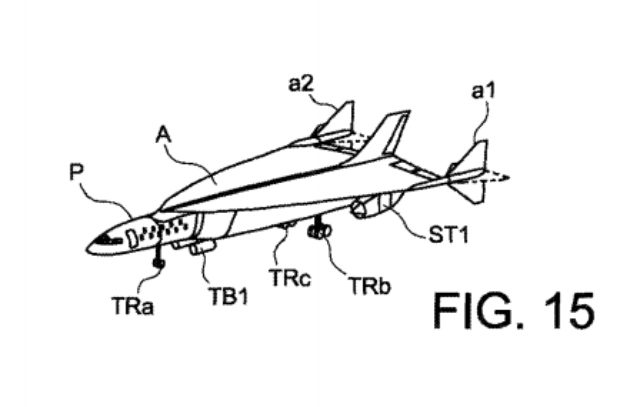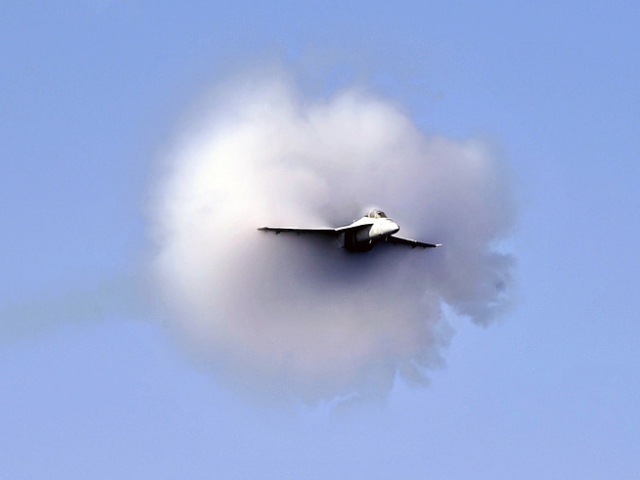
-
Airbus Is Developing A Supersonic Aircraft Capable Of Flying From NY To LDN In One Hour
23 Feb 2024 by Tayla in Aviation, Tech/Sci, World
[imagesource:pickpik]
It’s been more than twenty years since the legendary Concorde made its final flight, carrying with it the golden age of aviation when celebrities and affluent businessmen soared through the skies at supersonic speeds over the Atlantic Ocean.
While companies like Lockheed Martin and NASA have been trying to bring back supersonic commercial air travel since then, it was Airbus that managed to patent a revolutionary supersonic jet design back in 2015 before anyone could take the design and role with it.
The supersonic jet up Airbus’ sleave is promised to fly at more than two times the maximum speed of the Concorde.
TIME Magazine noted that the Concorde, which was developed partly by a company now owned by Airbus, was capable of flying at about 1,300 mph (2,100 km/h), or twice the speed of sound — a feat the new invention can beat with new turbojets and a hydrogen power system, according to the patent.
The patent documents stipulate that the “ultra-rapid” jet featured a design that made it capable of travelling up to about 4.5 times the speed of sound, making it fast enough to get from London to New York in just one hour.
The patent describes the supersonic aircraft as “an air vehicle including a fuselage, a gothic delta wing positioned either side of the fuselage, and a system of motors able to propel the air vehicle.”

Image: Airbus/USPTO
Although the Concorde shared a delta wing design, its propulsion relied on four Rolls-Royce Olympus turbojet engines equipped with variable engine intake ramps and reheat for takeoff and acceleration to supersonic velocities. However, a significant challenge for this iconic supersonic aircraft was the disruptive sonic boom generated upon breaking the sound barrier, leading to its prohibition from flying at supersonic speeds over land.
The conceptual aircraft by Airbus mitigates this sonic boom problem with its unique design, propulsion systems, and its unusual flight path.
The Airbus supersonic jet utilises a unique propulsion system comprising three distinct types of engines operating consecutively. Initially, during takeoff and landing, a set of conventional jet engines situated at the underside of the fuselage provide propulsion. Once the aircraft is airborne, these jet engines retract into the fuselage to minimise drag.
Subsequently, rocket engines positioned at the rear take control, propelling the supersonic jet vertically akin to a space rocket until it surpasses an altitude of 100,000 feet. Upon reaching the cruising altitude, bordering on the edge of space, the rocket motors deactivate and retract behind a flap.
At this stage, wing-mounted ramjets engage, propelling the aircraft to its maximum velocity of Mach 4.5, equivalent to approximately 5556km/h.
The patent application reveals that the aircraft in a civil application is designed to carry up to 20 passengers and feature hammock-like seats.
However, it has been more than eight years since the patent was awarded to Airbus, and we haven’t heard anything else about the revolutionary supersonic jet concept ever since.
I guess that means we shouldn’t expect to see a production version anytime soon.
[source:luxurylaunches]
Latest News
-
Thai Woman Sentenced To Death For Murdering 14 Friends With Cyanide In Shocking Killing Spree
[imagesource: Sararat Rangsiwuthaporn] A woman in Thailand, dubbed 'Am Cyanide' by Thai...
-
René Magritte Painting Sells For Record R2.1 Billion At Auction
[imagesource:renemagritte.org] A René Magritte painting portraying an eerily lighted s...
-
Brave Rape Survivor Alison Botha Faces New Challenge After Brain Surgery
[imagesource: Alison Botha] Gqeberha rape survivor Alison Botha, a beacon of resilience...
-
Get Ready For The Mother of All Celebrations As MCQP Turns 30
[imagesource:mcqp/facebook] Clutch your pearls for South Africa’s favourite LGBTQIA+ ce...
-
The Iconic Good Hope Centre Is Set For Redevelopment
[imagesource:capetown.gov] The City of Cape Town’s Mayoral Committee has approved the...
-






























